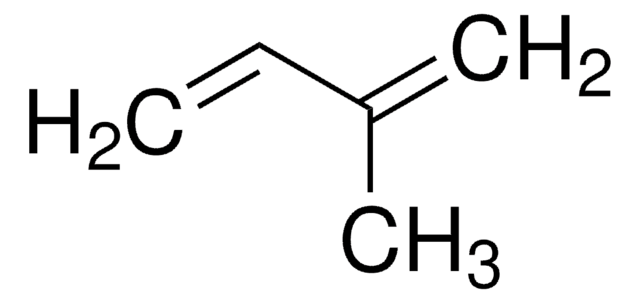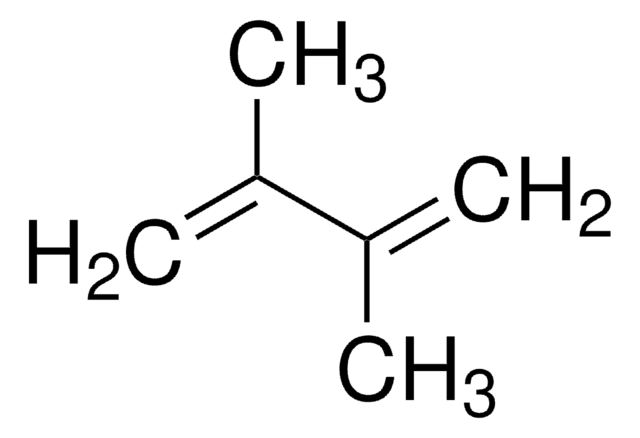I19551
Isoprene
99%, contains <1000 ppm p-tert-butylcatechol as inhibitor
Sinónimos:
2-Methyl-1,3-butadiene
About This Item
Productos recomendados
vapor density
2.35 (vs air)
Quality Level
vapor pressure
8.82 psi ( 20 °C)
assay
99%
form
liquid
autoignition temp.
428 °F
contains
<1000 ppm p-tert-butylcatechol as inhibitor
expl. lim.
10 %
refractive index
n20/D 1.422 (lit.)
bp
34 °C (lit.)
mp
−146 °C (lit.)
density
0.681 g/mL at 25 °C (lit.)
storage temp.
2-8°C
SMILES string
CC(=C)C=C
InChI
1S/C5H8/c1-4-5(2)3/h4H,1-2H2,3H3
InChI key
RRHGJUQNOFWUDK-UHFFFAOYSA-N
¿Está buscando productos similares? Visita Guía de comparación de productos
Categorías relacionadas
Application
Packaging
signalword
Danger
hcodes
Hazard Classifications
Aquatic Chronic 3 - Carc. 1B - Flam. Liq. 1 - Muta. 2
Storage Class
3 - Flammable liquids
wgk_germany
WGK 3
flash_point_f
-65.2 °F - closed cup
flash_point_c
-54 °C - closed cup
ppe
Eyeshields, Faceshields, Gloves
Elija entre una de las versiones más recientes:
¿Ya tiene este producto?
Encuentre la documentación para los productos que ha comprado recientemente en la Biblioteca de documentos.
Los clientes también vieron
Nuestro equipo de científicos tiene experiencia en todas las áreas de investigación: Ciencias de la vida, Ciencia de los materiales, Síntesis química, Cromatografía, Analítica y muchas otras.
Póngase en contacto con el Servicio técnico










